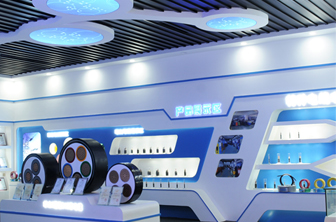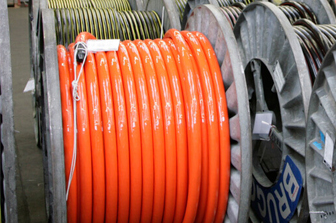Installation and Usage Issues When Applying Fire Resistant Electrical Cables
The most important components of a general cable are conductors, cable sheaths, and outer protective layers. Additional constructions, such as shielding, inner protective layers, or armored layers, are also added according to regulations, as well as some filler materials for a better gloss of the cable. The conductor serves as a medium for transmitting current or data signals, while the other components are for safety protection.
Understanding fire resistant electrical cable
Fire resistant electrical cables are widely used in various fields such as medical equipment, daily household appliances, mineral water bottles, corrosion-resistant decorative building materials, commercial electricity, light industry textiles, food industry, engineering construction, and biopharmaceuticals. Fire resistant electrical cables are commonly found in building constructions, certain places, and some machinery and equipment. Jinlianyu mainly produces fire resistant electrical cables for equipment use, and next, we will introduce the common installation and usage problems of fire resistant electrical cables in building constructions and places.
Installation and usage problems of fire resistant electrical cables
In order to reduce the probability of common failures in cable connectors in safety accidents, it is advisable to avoid as many connectors as possible during installation to ensure that the circuits can function normally in fire accidents. If it is necessary to connect them, the connectors must be fireproof.
Fire resistant electrical cables play a key role as distribution control circuits for EPS emergency power supplies and should work normally in case of a fire. Due to the significantly increased working temperature in fire accidents, in order to ensure the transmission function of the circuits and reduce voltage drops, for power supply circuits with stringent requirements for longer lines and allowable voltage drops, the fire-resistant characteristics of the cable cross-section must be expanded at least one layer.
Fire resistive cables should not be used as heat-resistant cables. Fire resistive cables can maintain normal operation of the circuits for a period of time under combustion conditions. In other words, once a fire accident occurs, fire resistive cables are not easily damaged and can still ensure normal operation for a period of time. This characteristic determines the critical role of fire resistive cables in modern cities and public buildings, as the circuits of control, regulation, correct guidance, and monitoring systems must ensure normal operation in the event of a fire.
When fire resistant cables are used in flammable places such as cable tunnel construction, inner layers or oil pipelines for cable aggregation, and oil storage tanks, Class A fire resistant cables should be used first. When the total number of cables is small, Class B fire resistant cables can be chosen.
Latest News & Blog
 English
English  français
français  Deutsch
Deutsch  العربية
العربية  tiếng việt
tiếng việt  ไทย
ไทย  čeština
čeština  Indonesia
Indonesia  Eesti
Eesti  български
български  slovenčina
slovenčina 



